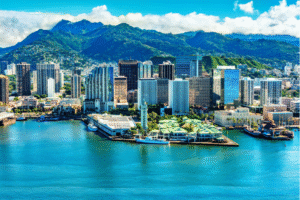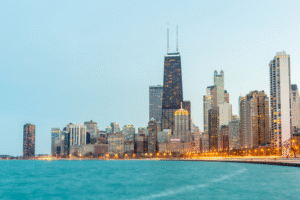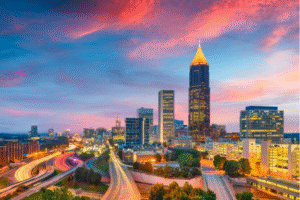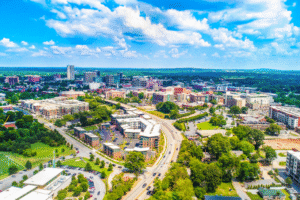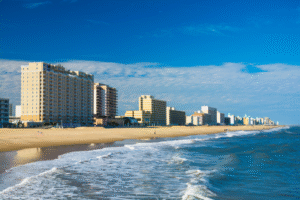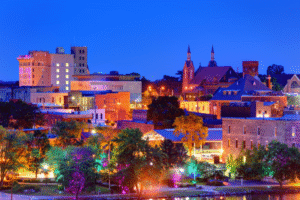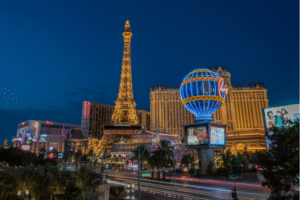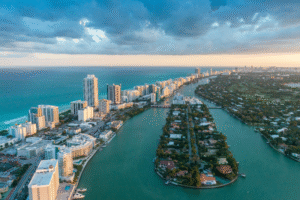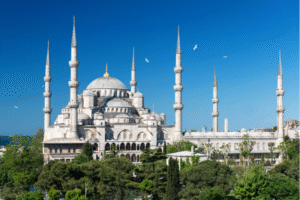Cape Town is more than a city—it’s a symphony. A place where nature sings in the crashing waves and howling winds, where stories echo through townships and museums, and where color explodes in both murals and mountain sunsets. Nestled between the Atlantic Ocean and the iconic Table Mountain, Cape Town feels like the edge of the world—and the center of something deeply human.
Whether you’re hiking cliffs, sipping wine in vineyards, or tracing history through cobblestone streets, Cape Town is a destination that challenges, inspires, and transforms.
Day 1: The Table and the Sea
Your Cape Town journey begins with its most famous landmark—Table Mountain.
Morning: Up Table Mountain
Start early and catch the first Table Mountain Aerial Cableway ride of the day. On a clear morning, the view from the top is unparalleled. The flat summit stretches like a stone plateau in the sky, offering panoramic views over the City Bowl, Robben Island, and the Atlantic Seaboard.
For the adventurous, skip the cable car and hike the Platteklip Gorge trail. It’s a steep climb, but the sense of accomplishment—and the view—are worth every step.
Brunch at Kloof Street
After descending, head to nearby Kloof Street for brunch. Try The Power and the Glory or Our Local, where you can sip rich coffee and enjoy avocado toast under the shade of ancient oaks.
Afternoon: V&A Waterfront and Robben Island
Spend the afternoon at the Victoria & Alfred Waterfront, a lively harbor precinct blending modern shopping, historic architecture, and street performers. From here, catch a ferry to Robben Island, where Nelson Mandela spent 18 years imprisoned. Former political prisoners guide the tour, adding profound personal insight into South Africa’s fight for freedom.
Evening: Sunset at Signal Hill
Cap your day with a picnic and bottle of local wine on Signal Hill, a favorite sunset lookout. Watch the sky turn pink over the Atlantic, with the city twinkling below and Table Mountain silhouetted behind you.
Day 2: Color, Culture, and Cape Point
Cape Town’s soul lives in its neighborhoods—and its natural wonders. Day two is all about immersion.
Morning: Bo-Kaap and District Six
Start in Bo-Kaap, the city’s most colorful district. Its cobbled streets are lined with vibrantly painted houses—a reflection of the area’s rich Cape Malay culture. Visit the Bo-Kaap Museum and take a local-led walking tour to learn about the community’s history, identity, and struggle.
Next, head to the District Six Museum, a powerful space that tells the story of apartheid-era forced removals. It’s a sobering but essential stop for anyone seeking to understand South Africa’s past—and present.
Lunch: Eastern Food Bazaar
Tucked behind the Grand Parade, Eastern Food Bazaar is a no-frills hall of culinary joy. From Indian biryanis to Turkish shawarmas and Chinese noodles, you can try flavors from across the world—at a great price.
Afternoon: Cape Peninsula Road Trip
Rent a car or join a tour for the breathtaking drive down the Cape Peninsula. Wind your way along Chapman’s Peak Drive, one of the most scenic coastal roads on the planet.
Stop at:
- Hout Bay: Take a short boat ride to Seal Island or browse the local weekend market.
- Noordhoek Beach: Vast and wild, it’s a perfect place for a windy walk.
- Cape Point Nature Reserve: Hike to the lighthouse at Cape of Good Hope, the southwestern tip of Africa. Watch wild ostriches roam the cliffs and whales breach in the distance (in season).
Dinner: Kalk Bay
On your way back, stop in Kalk Bay, a seaside town with an artsy vibe. Eat at Harbour House, perched right over the ocean, where you can enjoy fresh seafood with waves crashing beneath you.
Day 3: Vineyards, Penguins, and the Unexpected
Your final day in Cape Town is for indulgence, charm, and a few delightful surprises.
Morning: Boulders Beach and Penguins
Head to Simon’s Town and visit Boulders Beach, home to a protected colony of African penguins. Walk along the boardwalk or get down onto the beach for a close (but respectful) encounter. Watching these tuxedoed birds waddle and swim is endlessly entertaining.
Late Morning: Muizenberg and Surf Culture
Continue along the coast to Muizenberg, known for its colorful beach huts and beginner-friendly surf. If you’re up for it, rent a board and take a surf lesson. If not, grab a coffee at Empire Café and watch the surfers carve waves under the morning sun.
Afternoon: Stellenbosch Wine Country
No visit to Cape Town is complete without a drive inland to the Cape Winelands. Stellenbosch, a university town surrounded by vineyards and mountains, is only 45 minutes away.
Spend the afternoon wine tasting at historic estates like:
- Spier Wine Farm – with an art gallery and eco-conscious ethos.
- Delaire Graff – luxurious and scenic, with stunning gardens.
- Tokara – modern, stylish, and with sweeping valley views.
Pair your wine with a cheese board, biltong (South African dried meat), or even a fine-dining lunch at the estate.
Evening: Jazz, Art, or Bree Street Vibes
Back in Cape Town, end your journey your way:
- Catch live jazz at The Crypt, an underground bar beneath St. George’s Cathedral.
- Browse the First Thursdays art walk if you’re visiting on the first Thursday of the month.
- Or head to Bree Street, packed with trendy bars like Orphanage Cocktail Emporium or The Athletic Club & Social.
Toast your trip with a local gin and tonic—the city’s craft gin scene is booming.
Tips for Cape Town Travelers
- Weather can shift rapidly. Bring layers, especially for mountain and coastal outings.
- Use Uber or Bolt for safe and affordable transportation.
- Cape Town is walkable in parts but very spread out—renting a car is useful.
- Safety is important—stay alert, avoid walking alone at night in unfamiliar areas, and ask locals for advice.
- Book Robben Island in advance, especially during peak season.
Final Thoughts: Why Cape Town Stays With You
Cape Town isn’t a one-note city. It’s layered, like its clouds over Table Mountain. It’s challenging, comforting, fierce, and warm. You’ll taste the salt in the air, hear voices rise in song in a township, feel the echo of history on prison walls, and see beauty in its bold resilience.
It’s the kind of place that stretches your senses—and your soul. And once you’ve stood at the edge of the continent with the wind in your face, a part of you stays behind… and keeps calling you back.



